The time to hire metric remains one of the key performance indicators for hiring teams. You’d be surprised to learn that only 30% of companies are able to fill a role within 30 days. The remaining take anywhere between 1–4 months to make a hire!
Measuring time to hire is no easy feat, but once you have the data, you can determine what needs to improve.
And why should you aim to reduce time to hire?
Taking too long to fill a role doesn’t just increase the cost per hire, but with it comes the risk of losing fast-moving (high quality) candidates.
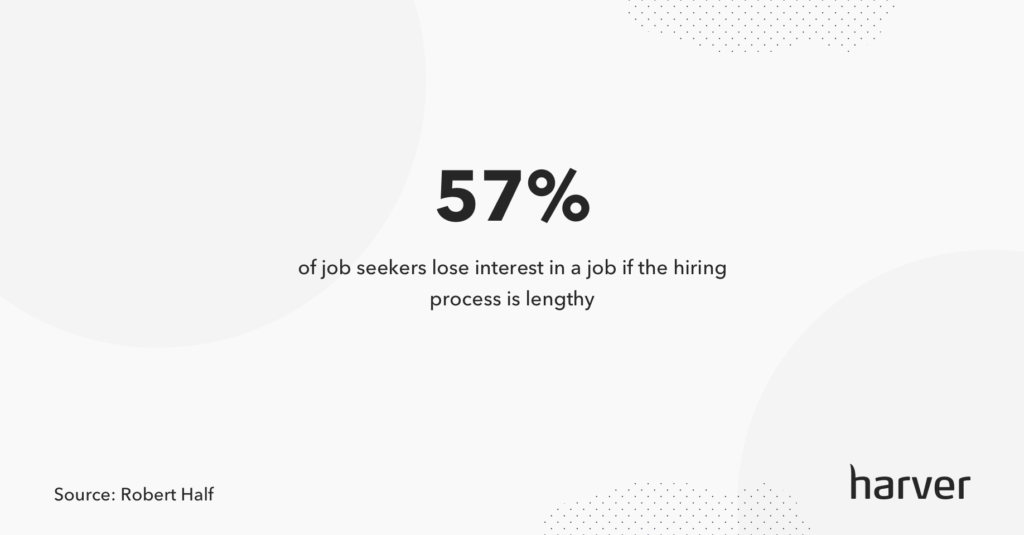
So, to help you game up and improve your recruitment process (and find the perfect person for your job the fastest), here are 10 effective ways to reduce the time to hire.
What’s in?
1. Reduce time to hire by collecting the right data
As soon as we talk about measuring something, it’s obvious that data is involved. So, of course, when it comes to measuring time to hire – and eventually reducing it where possible – data is key.
In that regard, as a first step toward working on your time to hire, try to find out:
- How long it currently takes you to fill a role.
- The time it takes for the candidates to move between the stages (for example, from the application stage to the phone interview stage or from the phone interview stage to the in-person interview stage, and so on).
- How your time to hire compares with the standard time to hire in your industry.
- The number of calendar days from the final selection to making the job offer.
- The ratio of good to poor applications you typically get (this will help you diagnose if the slowdown is happening in the sourcing phase).
Once you’ve gathered all the data, pick the most alarming numbers and look for ways to improve them.
Here’s a practical example. If you see that it takes on average 2 days for candidates to provide their details and send you their resume, but your hiring managers take a full week to reply, you might want to automate some of the manual tasks, to reduce the workload on your managers.
Steps like screening candidates, analyzing their CVs or looking at the results of pre-employment tests and moving them to the next stage, as well as scheduling interviews with the selected candidates can all be automated.
This will benefit both the candidates – who will move through the process faster and thus find a job sooner – and the recruiters or HR managers, who will free up time for more important things.
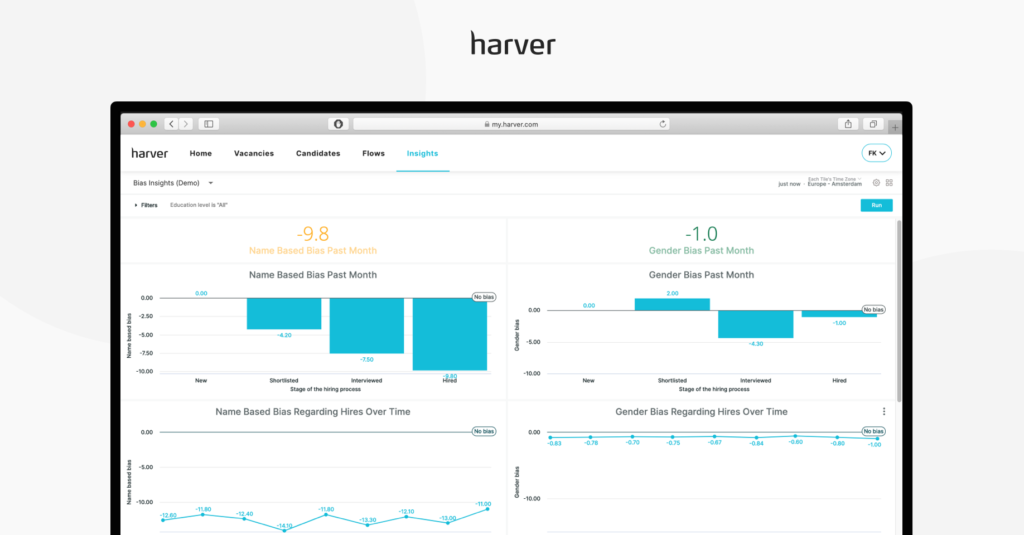
The Harver platform enables you to automate most of your recruitment processes, from sourcing to interview scheduling.
If you’d like to see how Haver can transform your hiring process,
book a demo here!
2. Establish a structured hiring process
Not having a structured hiring process means having a longer time to hire – you basically end up starting from scratch each time there’s a new role to fill.
And even if you do have a process in place, grab a big piece of paper and sketch it out! From start to finish, what does the candidate journey look like, what are the steps, how long do they take?
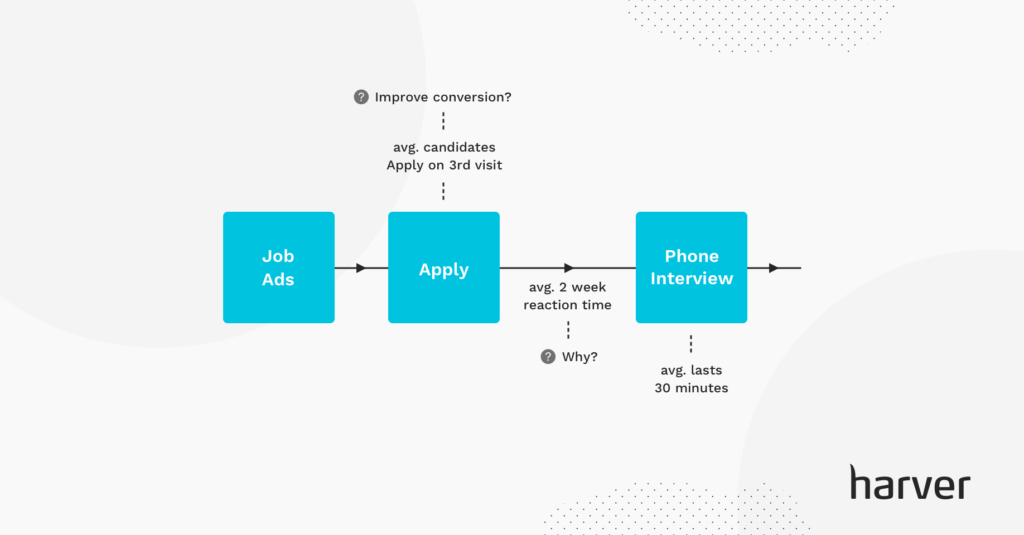
A documented hiring process also protects you from slowing down and improves your time to hire dramatically as you know exactly what to do at each step.
Advocating the need for a documented hiring process, Adam Robinson (CEO and Cofounder of Hireology) says: “A structured hiring process is cost effective and will streamline how you find and qualify candidates. Plus, it can provide measurable, tangible results for your business by helping you avoid damage caused by bad hires.”
What does this mapping look like in practice?
Before we design a new solution for our clients, we map out their entire recruitment journey, from both perspectives – what the recruiter sees, and what the candidate experiences. This enables us to identify the areas that can be automated and improved by implementing the Harver solution.
We’ve detailed this topic in more depth in one of our webinars on process efficiency, which you can watch below.
3. Build a talent pipeline ahead of time
A talent pipeline – or a group of candidates you’ve pre-screened for a certain role – is one of the most powerful ways to reduce time to hire.
When you have a number of qualified candidates on your speed dial, you don’t have to advertise your job, wait for the applications to roll in, or spend time vetting the applicants. All you need to do is reach out to these people about the open role.
To get you going, here are 5 basic steps to build a quality talent pipeline:
- Identify the roles you often hire for.
- Determine the requirements for those roles (skills, cultural fit, etc.).
- Find the hangouts where you could get your ideal candidates (conferences, industry events, social networks like LinkedIn, referrals, etc.).
- Identify the talents who look like good fits and reach out to them.
- Stay in touch with these candidates by sharing meaningful content and personalized messaging (invite them for coffee every now and then!)
Building a talent pipeline is often considered the most effective way of sourcing candidates. But how do you do it efficiently when you deal with high volume hiring?
The solution is, again, to automate as much as possible and let technology help you. For example, for our clients in the Contact Center and BPO space, we design specific pre-employment tests that can assess the characteristics and skills of applicants, and then return matching scores for different skills.

Even if the applicants are not selected for current openings, recruiters can still see their profiles and what roles they would fit better. This makes it easy for HR managers and recruiters to reach out to the right people if they need to scale up their hiring process.
4. Improve your careers page and offer applicants a better experience
Usually, candidates visit your careers page at least twice during the hiring process: (1) When they learn about your job opening, and (2) when they’re considering your job offer.
If your careers page doesn’t sell your candidates on your jobs, they’ll either drop off immediately or end up rejecting your offer.
Now, both of these situations negatively impact your time to hire as drop-offs result in fewer applications (and eventually a slower time to hire), and offer rejections mean starting over with making an offer to the second most eligible candidate and the subsequent negotiation(s), if any.
By improving your careers page, you can reduce both drop-offs and rejections and speed up your time to hire.
You can start by anticipating all the information your candidates seek on your careers page and give it to them.
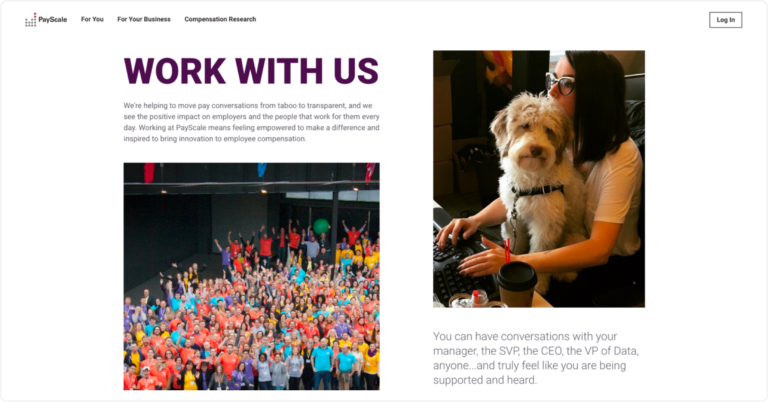
Payscale does a great job in conveying a personal
message on their careers page.
Now, to make sure candidates don’t abandon the application once they click the Apply button, provide them with a great experience.
An engaging, mobile-first experience that showcases your company culture and work environment through realistic job previews is an excellent way to start.
For example, the candidate experience we designed for Harver, one of our retail clients. Candidates love the application process and this is crucial for a retail or hospitality business, where the applicant is often a customer as well.
5. Hire faster by accelerating sourcing
Strictly speaking, the sourcing phase isn’t a part of the time to hire territory. But since it can have a (significant) impact on your actual time to hire, we wanted to include it anyway.
If you know the ratio of good to poor applications you typically get, this will help you diagnose if there is a slowdown happening in the sourcing phase. After all, sorting through the low-quality applications will cost you a lot of time and energy without ROI.
To get an idea of your ratios, you can look at the applicant-to-interview ratio for example. The average is 12%. If your ratio is better than that, you’re most likely sourcing a relatively high percentage of good candidates.
In case you find yourself with a not so great ratio, here are a few ways to improve your sourcing methods:
- Programmatic advertising: Programmatic advertising means running paid ad campaigns to certain target groups to advertise your job openings. If you’ve got the budget, programmatic advertising can help you raise awareness about your openings, build your employer brand, and earn some promising applicants as a result.
- Social sourcing: Use social media networks like LinkedIn, Facebook, Twitter, etc. to identify the people in your industry who could be good fits for your company. You can even use offline events like industry gatherings and meetups to connect with your ideal candidates.
- Internal talent auditing: Stay updated on the status of your internal talent situations. You may find you’re able to fill some positions just via internal promotions.
- Referrals: The #1 way candidates learn about jobs is through referrals. Design winning referral schemes and reward the employees who find you quality talent.
- Browse talent databases: Job websites like Indeed hold millions of resumes. Tap into these and use the platforms’ advanced search functionalities to filter the candidates who could make excellent employees at your company.
Once you get enough quality applications, you’ll be able to identify the best candidates sooner, which will result in improving your time to hire.
And learn 15 ways to reduce your Time to Hire!
Learn the tactics top recruitment teams in your industry leverage to reduce Time to Hire. Stop losing candidates to competitors, improve your company’s bottom line revenue and candidate experience.
6. Invest in a good Application Tracking System (ATS)
A good ATS helps you at each point during your hiring process. All the way from posting your job ad on multiple job boards to notifying you in real time as people apply, an ATS can help you increase efficiency throughout large parts of your hiring process.
With interview scheduling, application streamlining and sorting, talent pipeline building, compliance-checking, and automation capabilities, an ATS is a core tool to structure your hiring process and reduce your average time to hire.
Don’t rush choosing your ATS but analyze your needs carefully and test out the tool before committing to it.
7. Use pre-employment assessment software
While assessments like skill tests, personality questionnaires, and cognitive ability assessments add value in terms of getting the right candidate in, they also add time to your hiring process:
- A cognitive ability assessment adds between 2.6 and 4.4 days on average
- A job skills test adds between 0.6 and 1.5 days on average
- A personality questionnaire adds between 0.9 and 1.3 days on average
Considering that the best talent is available only for 10 days, bringing down this screening time is essential.
A good screening solution can dramatically cut down your time to hire without losing quality. Harver clients, for example, can screen candidates for the right skills, personality, and cultural fit without having to design tests that take days to create and implement.
With intelligent screening, you also get to rely less on the resume and more on the candidates themselves.
Harver has helped many companies (like Netflix and Zappos for example) decrease their time to hire without compromising on the quality of the candidates.
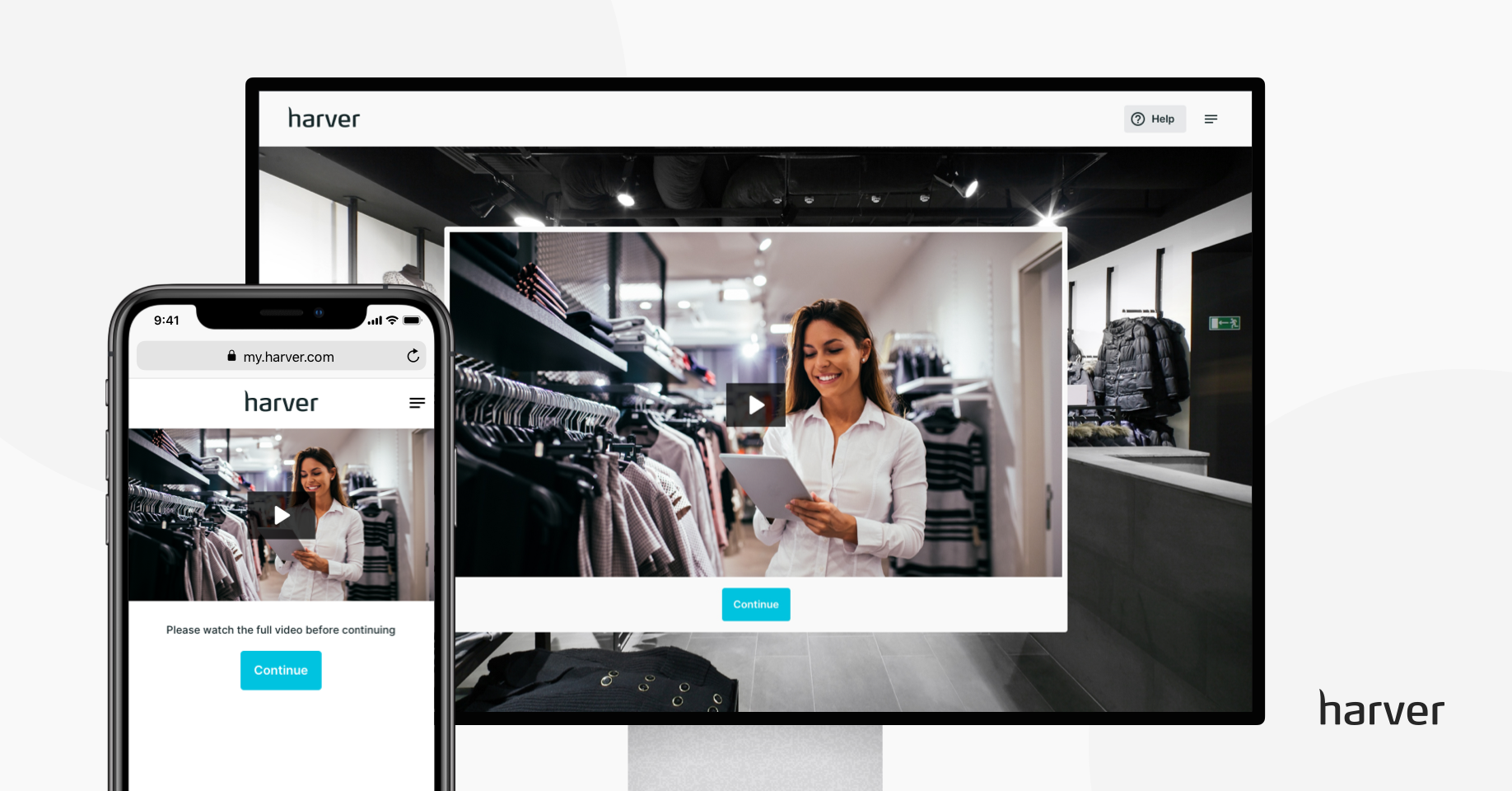
Harver automates part of the hiring funnel
and provides candidates with an engaging experience.
8. Use an end-to-end digital hiring platform
There’s not one single solution that takes care of your complete hiring process (yet). But if the different tools you use don’t work well together, you’ll lose track of applications and candidates along the way.
So, to plug any leaks in your hiring toolkit and to optimize your time to hire, make sure to connect all your systems.
In order to do so, create a hiring workflow and map the different tools you use at each stage. In the end, your recruitment tech stack may just look a little something like this:
- A pre-employment testing solution
- An ATS
- An employee onboarding solution
Alternatively, you can look for a solution that offers multiple functionalities.
Our platform for example is designed specifically for high-volume recruiters who need to decrease their time to hire, improve their process efficiency and recruit better candidates while offering applicants an engaging experience.
We help our clients improve these metrics by fully digitizing their recruitment process and helping them develop a streamlined hiring strategy.
You can read more about our approach to digital transformation in the ebook below.
- White paper
Before you continue!
Don’t forget to grab your free copy of our new whitepaper on the digital transformation of contact center recruitment processes. Learn about:
- The biggest challenges in contact center recruitment today and how to overcome them.
- The 4 pillars of Digital Transformation
A top BPO’s journey towards a digitally transformed recruitment procest

9. Improve your job listing
Writing a job description is the first step of the sourcing stage. As such, this isn’t officially part of the time to hire territory either. But, since it does have an impact on your time to hire, a word on writing a job description is in order.
Losing good candidates right at the start of the sourcing stage results in a delay in the time to hire as you get fewer eligible applicants.
What causes this?
Gender-biased words, for example. Job listings with a gender-neutral wording get 42% more candidates.
So, try to ensure you write gender-inclusive job descriptions. With a more inclusive job ad, you’ll attract more and better applicants and this will reduce your sourcing time (and eventually your time to hire).
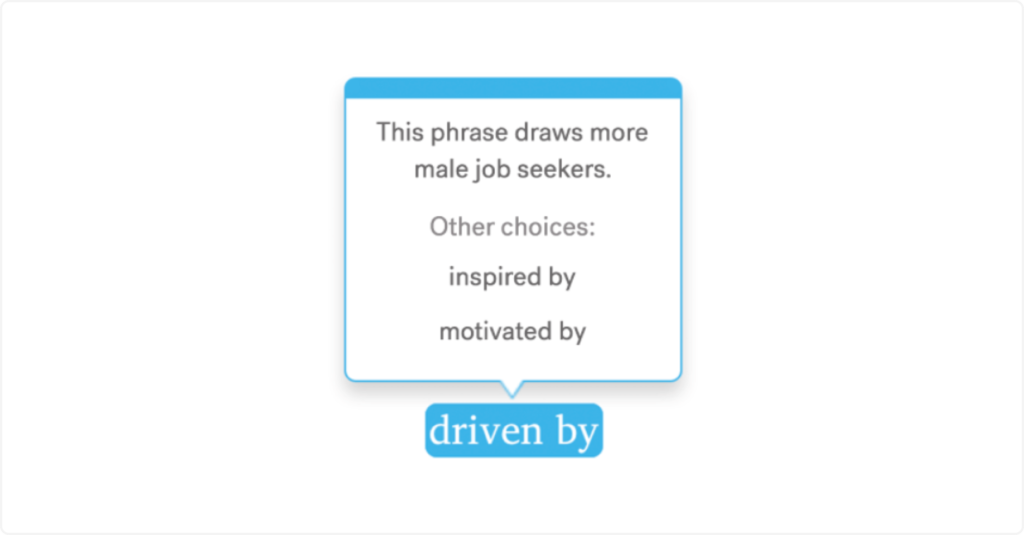
Tip: Textio, an augmented writing tool, can be a great help in writing
the perfect job description.
10. Make interviewing quick and automate scheduling
Delays in scheduling interviews directly add to your time to hire. With most companies conducting at least 3 rounds of interviews, the time to schedule interviews usually offers a lot of room for improvement.
Using an automated interview scheduling tool will save you time and eliminate delays in the process, reducing the frustration on the applicant site and offering them a better experience.
With Harver, you can fully automate this process and offer applicants job security in less than 72 hours. The entire application process, from the moment candidates press the Apply button to the interview, takes less than 10 minutes, and they can immediately choose to interview with one of your available managers.
If you’re curious to learn more, you can book a demo below.
Ready to transform your hiring process?
Wrapping it up
Once you’ve found that candidate, don’t delay the offer. You’ll be surprised to know that the biggest reason candidates reject job offers is because they’ve already accepted someone else’s offer. You don’t want this to happen with your top pick.
If a candidate makes a counteroffer or shares details about a competing offer, be prepared to negotiate. Because you know the candidate very well by this point, use all your information to craft lucrative perks beyond the paycheck.
Like what you see?
Don’t miss out. Subscribe to our quarterly digest to get the latest TA and TM resources delivered right to your inbox.





